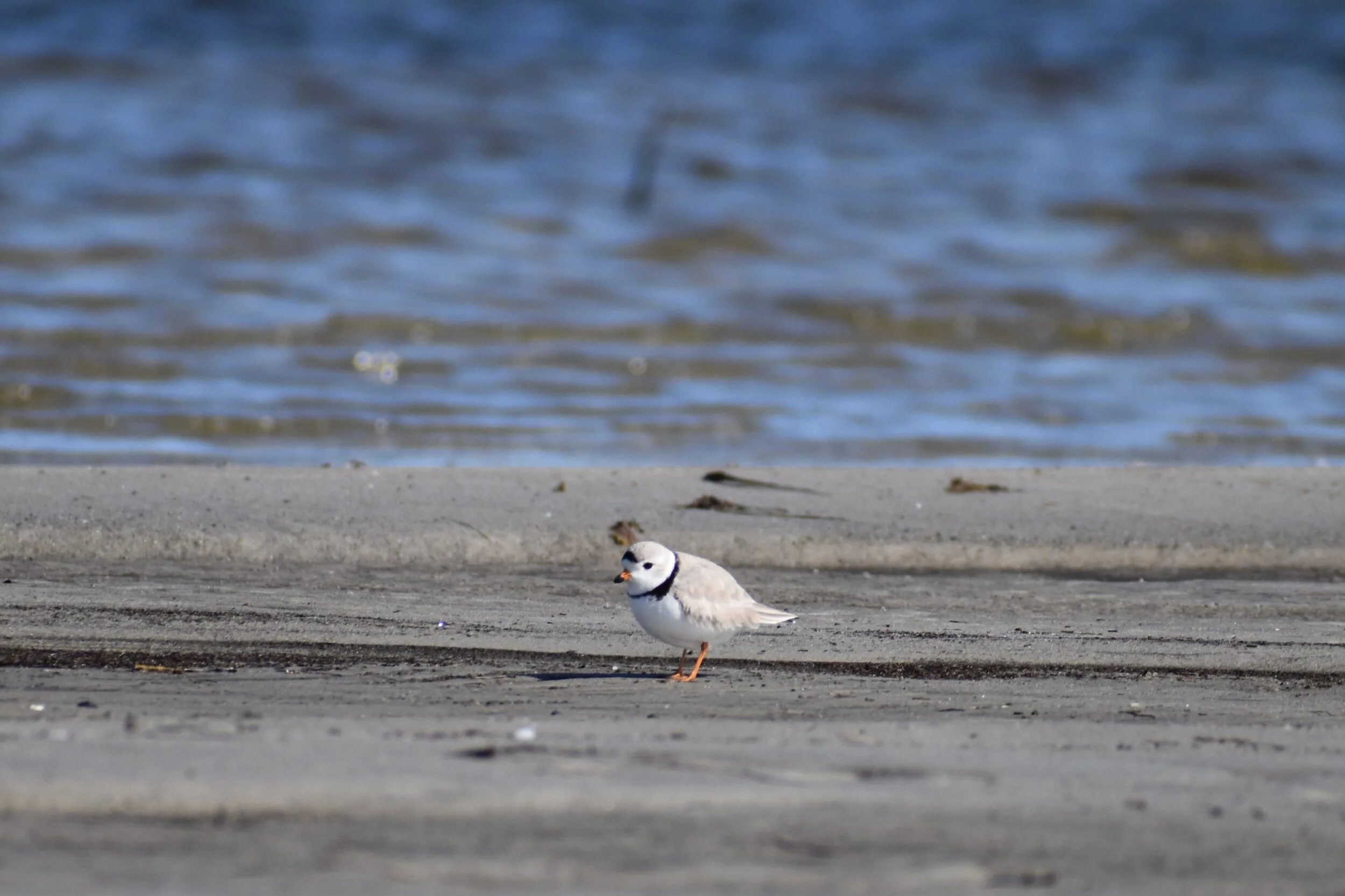Every spring vulnerable shorebirds such as the Piping Plover return to the coasts of Rhode Island to nest along our beaches. According to the U.S. Fish & Wildlife Service, the Piping Plover is considered threatened and endangered. This concerning status can be attributed to development projects near nesting areas and human disturbance resulting in habitat degradation. Plovers typically form small depressions in the sand next to small clumps of beach grass to hide their nests from predators and to keep safe from hightide. Not only do these plovers blend in well with the colors of the coast, the pigments of their eggs can easily be mistaken for sand or speckled rocks.
Protective fencing surrounds a bird nesting area managed by The Nature Conservancy of Rhode Island
In known nesting areas in Rhode Island, wildlife organizations such as the Audubon Society of Rhode Island, The Nature Conservancy of Rhode Island, and the U.S. Fish & Wildlife Service have signage posted in protected areas asking visitors to keep away from plover nesting sights. However, in other coastal areas the presence of protective fencing and signage isn’t as obvious to people. With warmer temperatures and the desire to visit the beaches, it is critical that we work together to keep ourselves, pets, and sightseers off the dunes so our migratory shorebirds come back to Rhode Island to nest year after year.
A Piping Plover walks along the sand


